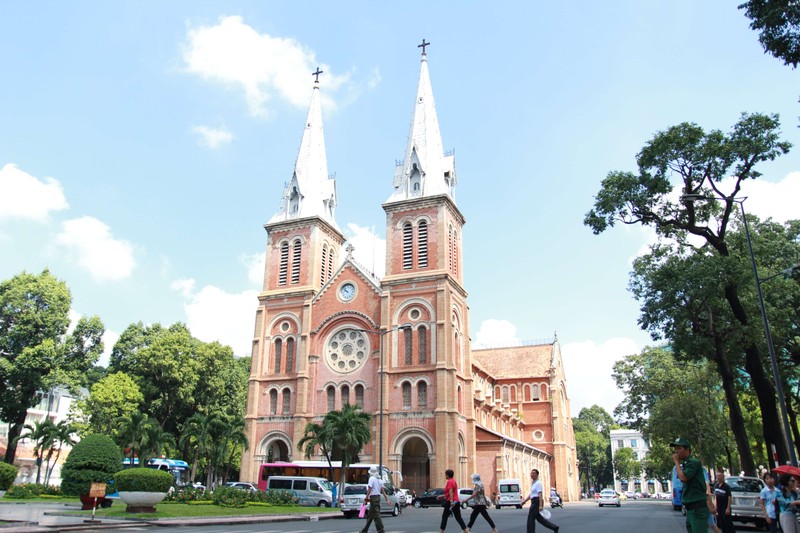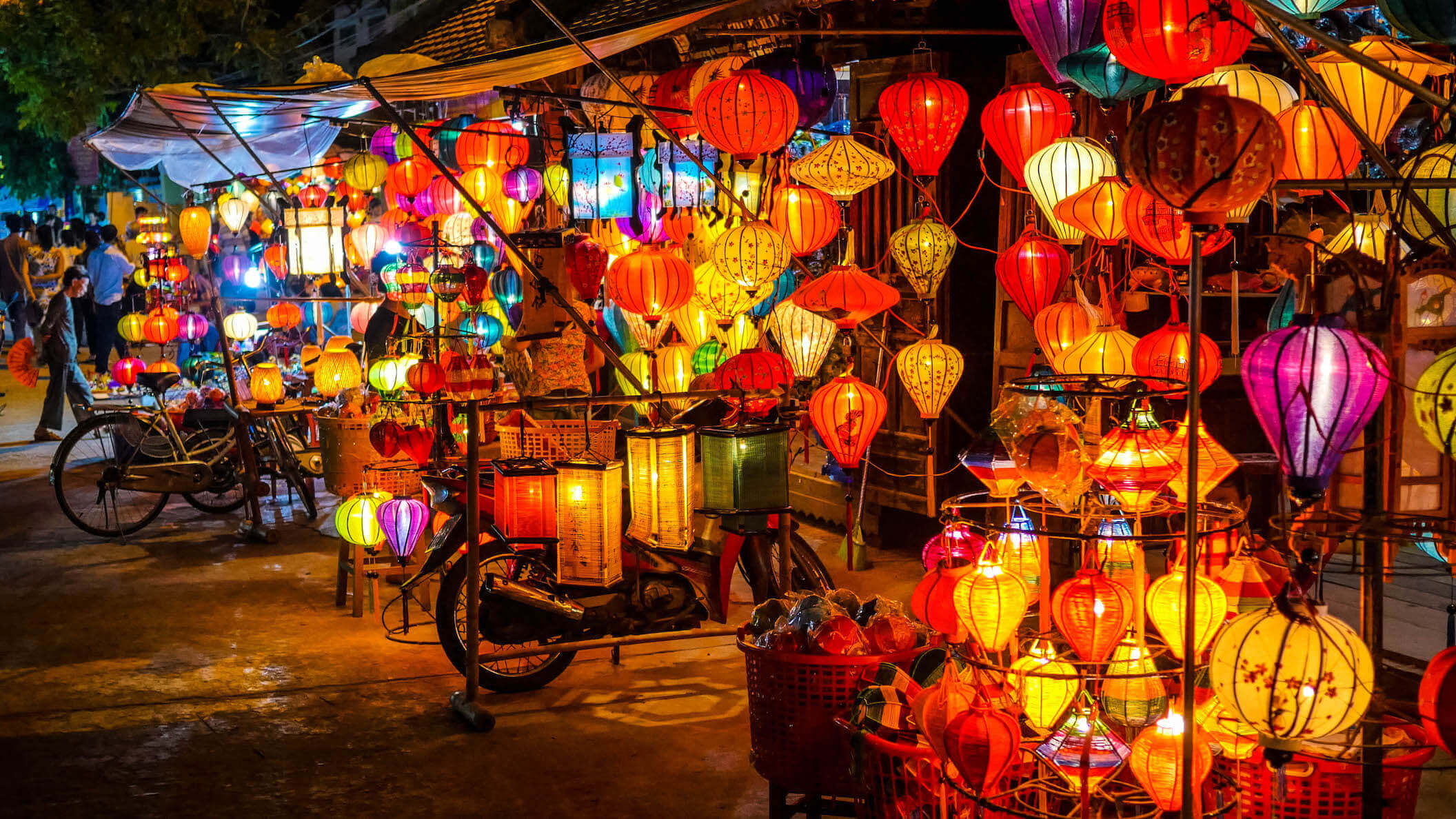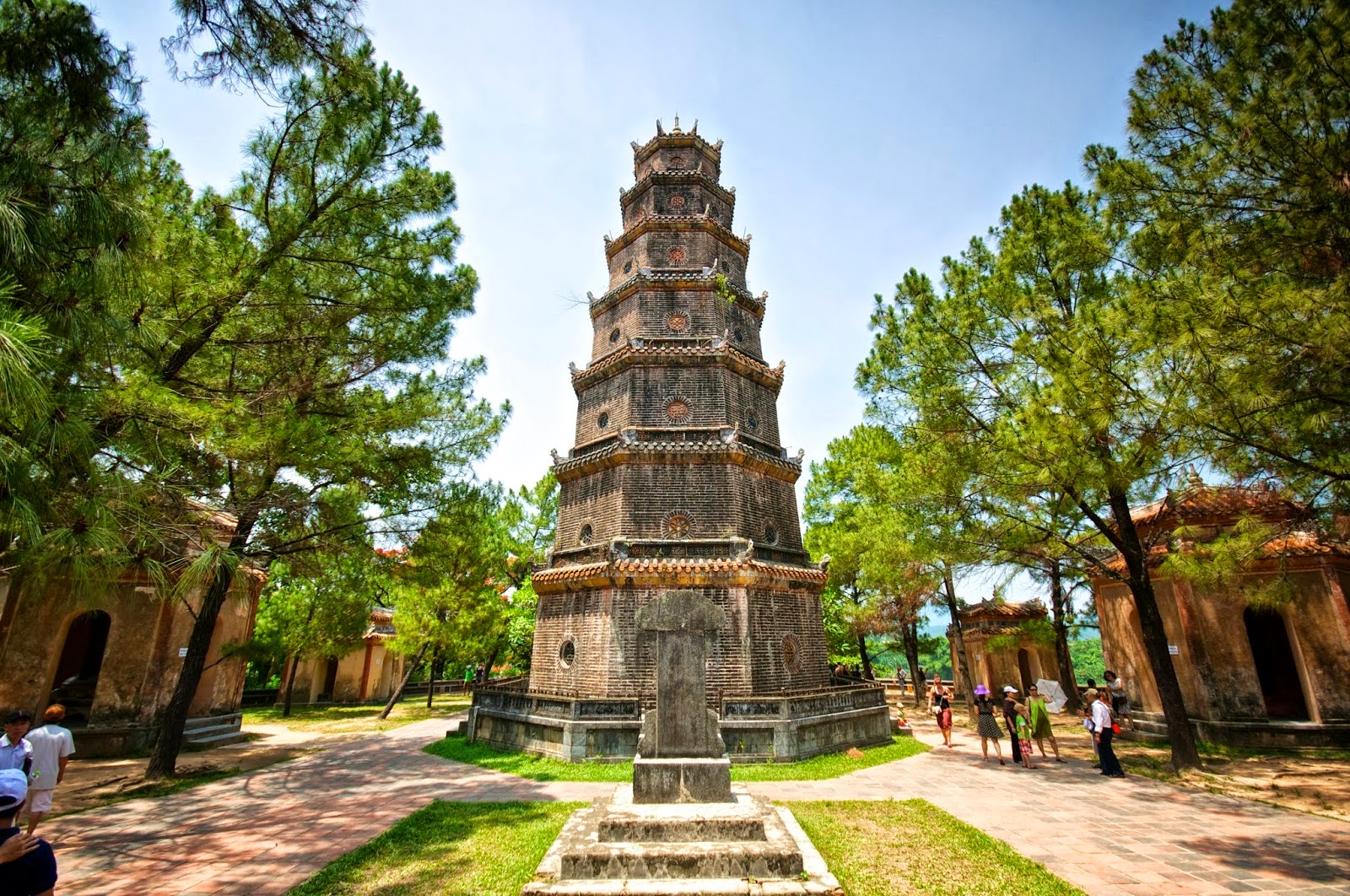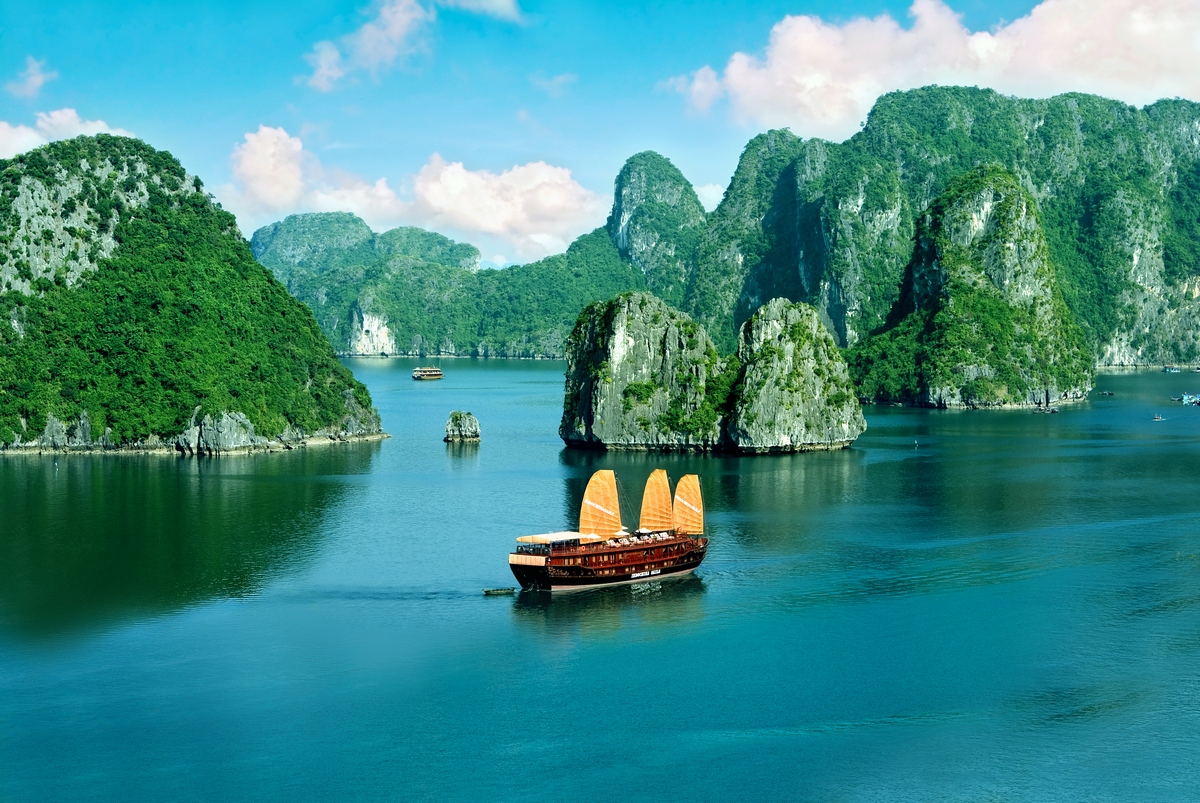DAY 1 : ARRIVE IN HO CHI MINH CITY
Arrival in Ho Chi Minh City at …
Customs formalities and luggage recovery (Estimated time approximately 30 minutes).
Lunch at the restaurant
Visite city :
Binh Tay Market, constructed by the French in the 1880s, is located in the centre of Vietnam’s largest Chinatown district. Unlike Ben Thanh Market in District 1, this market mainly serves the local population with its extensive range of fresh fruits, vegetables, poultry, meat and seafood from regions across Vietnam. Also known as Cholon Chinatown Market, Binh Tay Market occupies a two-storey building along Thap Moui Street. Travellers can also find an assortment of handicrafts, lacquerware, and textiles that are sold in bulk, though goods are not varied compared to other (more touristy) markets in downtown Hanoi. Along with the interesting historical and cultural aspect of Cholon, Binh Tay Market is great for experiencing the local lifestyle and sampling unique Vietnamese-Chinese delicacies.
Thien Hau Temple in Saigon is a Buddhist temple dedicated to the Chinese sea goddess, Mazu. It’s believed that she protects and rescues ships and people on the sea by flying around on a mat or cloud. Mazuism is connected with traditions and beliefs from both Taoism and Buddhism. Mazuism is therefore an incorporation of different aspects and traditions which have merged to form a new belief. You will find this temple in ‘Cholon’ (Chinatown) in District 5, which is roughly a twenty minute drive from the city centre.
The Central Post Office : is one of the oldest buildings in Ho Chi Minh City. This was built around 1886 – 1891 based on Villedieu’s design, a famous French architect. It has been the busiest post office of the country. Its architecture, with a roof topped by a glass roof, is reminiscent of the buildings of the World Expo. It is a place where it is nice to stop.
Saigon Notre Dame Cathedral : built in the late 1880s by French colonists, is one of the few remaining strongholds of Catholicism in the largely Buddhist Vietnam. Sitting between two streams of traffic, Notre Dam Cathedral is in the middle of Saigon’s chaotic District 1. A brick, neo-Romanesque church with 40m-high square towers tipped with iron spires. Interior walls are inlaid with devotional tablets and some stained glass survives. In front of the cathedral stands a Virgin Mary statue, which is said to have shed tears in 2005, causing thousands of people to stop around the Basilica.
The People’s Committee Building of Ho Chi Minh City : was built and put into use in 1909 as a hotel whose original name was Hôtel de Ville. It was designed by Gardes, a famous French architecture. This building is thus one of the oldest, biggest and most beautiful French style buildings in Ho Chi Minh City, functioning both as a city institution and as the city’s most prominent landmark today.
The Giac Lam Pagoda : built in 1744, The Pagoda is one of the oldest pagodas in Ho Chi Minh city. Giac Lam Pagoda is located at 118 Lac Long Quan Street, Tan Binh District. Giac Lam is one of the oldest pagodas in Ho Chi Minh City. “The Third” structure of Giac Lam Pagoda is also typical of southern pagodas. Giac Lam Pagoda has 118 statues made of wood, bronze and cement. Most of them are very ancient and valuable, which demonstrate the development of Vietnamese art of sculpture in 18th century. Not only is Giac Lam a place to observe traditional southern structure of pagodas.

Dinner at the restaurant
Overnight at the hotel in Ho Chi Minh City.
DAY 2 : HO CHI MINH CITY – MY THO – BEN TRE – HO CHI MINH CITY
Breakfast at the hotel
Departure to My Tho.
Take a boat trip on the Tien River to the other side of the Tien River: Ben Tre is one of the provinces in the Mekong Delta in Vietnam, bordered on the north by Tien Giang province, to the east by the eastern sea of Vietnam, to the west by the province of Vinh Long and to the south by the province of Tra Vinh. Ben Tre is 70 km from Ho Chi Minh City.
Visit a village practicing fish farming, the floating fish market along Dragon Island.
Back to Ho Chi Minh City
Dinner at the restaurant
Overnight at hotel in Ho Chi Minh City.
DAY 3 : HO CHI MINH CITY – DA NANG – MY SON – HOI AN
Breakfast at the hotel
Then transfer to Ho Chi Minh City Airport for flight to Da Nang
Arrival in Da Nang, departure for My Son. Arrival in the city of HOI AN: Formerly located on the maritime routes of the silk, Hoi An knew its expansion from the 15th century when large traders settled there counters. At its peak, Hoi An, contemporary of Macao and Melaka, was a must for Dutch, Portuguese, Chinese, Japanese and other merchants. These rich merchants also build elegant all-wood houses. Over the decades, all the architectural styles mingled to give a unique cachet to Hoi An, cited today as a World Heritage Site by UNESCO. 844 buildings have been listed for their historical and architectural interest.
walk to the market.

Dinner at the restaurant
Overnight at hotel in Hoi An
DAY 4 : HOI AN – HUE
Breakfast at the hotel
Visit :
Walk to the ancient city of Hoi An: VND 120,000 voucher giving you access to 4 tours to choose from: visit the Hoi An Historical and Cultural Museum, Quan Cong Temple, Phuc Kien Temple and Headquarters, a show dances or singing cham of about twenty minutes is offered, visit also the Japanese bridge which was built in 1593 and the old house of Phung Hung …
Lunch at the restaurant,

Depart to Hue . Visit the Museum of Cham Sculpture : displayed about 300 original sandstone works and terra-cotta. All works have the date from the 7th century to 15th century. Museum of Cham sculpture is the creativeness which base on Champa ancient art. It is small architecture but unique. Some architects appreciated that it was one of the most beautiful architectural museums in Southeast Asia and the world. The ancient contour in the design of two French architects still retains until now. Coming to museum of Cham sculpture as stepping into ancient culture, it converges all kinds of Cham quintessential culture.
Dinner at the restaurant
Overnight at hotel in Hue
DAY 5 : HUE
Breakfast at the hotel
Departure from Hoi An to Hue.
Visit of :
Hue Citadel : has a circumference of 10 kilometers with the height of 6.6 meters and 21 meters thick with forts being meanderingly arranged, accompanied by cannons, artilleries and ammunitions. Initially the fortress was built solely by soil, only to be replaced by bricks afterward. Surrounding the city is the complicated canal system served not only as a protection but also as a waterway with nearly seven kilometers. There are total of ten main majestic gates leading to the Imperial City of Hue. All the typically traditional Eastern architectures including majestic palaces, tombs and museums stand accordantly together to make an utmost amusing attraction right in the heart of Vietnam.Famously being one of Vietnam’s seven UNESCO World Heritage Sites.
The village making conical hats
Ca Hue on the boat trip on the Huong River: is a form of classical Vietnamese music of Central Vietnam, particularly the Hue region. It contrasts with the ca trù genre to the North, and the tài tử “gifted scholar” style to the South. The singer sings solo, as in the ca trù genre, accompanying herself with small wooden clappers, sometimes similar to the phach sticks used in ca tru, sometimes shaped like small teacups.
Lunch at the restaurant,
Thien Mu Pagoda : is situated on Ha Khe hill, on the north bank of the Perfume River, 5 kilometers from Hue city. The beautiful pagoda was built in 1601. The most striking feature of the pagoda, Phuoc Duyen tower (initially called Tu Nhan tower), was erected in 1884 by King Thieu Tri, and has become the unofficial symbol of Hue. It is the highest stupa in Vietnam, and is often the subject of folk rhymes and cadao about Hue, such is its iconic status and association with the city. More importantly, it is regarded as the unofficial symbol of the former imperial capital. To the left of the tower is a pavilion sheltering an enormous bell. The bell, called Dai Hong Chung, was cast in 1710 by Lord Nguyen Phuc Chu. It is famous for the great size, which is 2.5m high and 3,285 kg weigh.Besides, there are several popular works of art inside the pagoda, which are of great captivation to tourists.
Tu Duc Tomb is considered as one of the most beautiful and picturesque and largest works of architecture of Nguyen Dynasty’s royal palaces and tombs. People say that Tu Duc Tomb is a must in every tour to Hue City.
Minh Mang Tomb : is in Huong Tho Commune, Huong Tra District, on the west bank of Perfume River and about 12km south of Hue City center. This place is where 2 The tributaries join to form the picturesque Perfume River. When compared to other royal tombs in Hue, this tomb’s design represents a middle way between Tu Duc’s and Khai Dinh’s – lacking the sprawling size of the former, yet far more refined than the latter, the Minh Mang tomb nonetheless offers a balance of landscaping and architecture that is unmatched among the tombs in Hue. The Emperor reigned from 1820 to 1840. About 40 monuments comprise Minh Mang’s royal tomb, all on an oval 44-acre lot surrounded by a high wall. The complex is bisected down the middle by a straight path about 2,300 feet long, along which the monuments are arranged. (Contrast this with Tu Duc’s Tomb, whose monuments are arranged along two axes – one for the palace and living quarters, and another for the necropolis.)The whole arrangement is surrounded with reflective ponds fringed with pine trees.

Dinner at the restaurant
Overnight at hotel in Hue
DAY 6 : HUE – DONG HOI
Breakfast at the hotel.
Then departure to Dong Hoi
Visit the Vinh Moc tunnels located in the demilitarized region at the 17th parallel.
Lunch and dinner at the restaurant.
Overnight at hotel in Dong Hoi
DAY 7 : DONG HOI – HA NOI
Breakfast at the hotel
Visit Phong Nha Caves: you arrive at the site by boat (40 min) then continue on foot to discover the caves. The “Paradise” cave (Thien Duong) is considered one of the most remarkable collections of stalactites and stalagmites in the park.

Return to Dong Hoi, transfer to the train station.
Boarding on night train berths for Ha Noi.
DAY 8 : HA NOI – HA LONG
Arrive Ha Noi, depart to the famous Halong Bay, for a memorable cruise on the bay.
Town of HA LONG: Its bay, newly designated among the 7 new wonders of the world, offers one of the most beautiful seascapes in the world.

Night berths for Ha Long.
DAY 9 : HA LONG – HA NOI – LAO CAI
Breakfast at the hotel
You will have the opportunity to see the sunrise over the bay.
After we continue the cruise to Bai Tho Mountain in the other beautiful bay of Bai Tu Long.
Lunch and return to the pier
Back to Hanoi, free time for purchase
Transfer to the station, departure for Lao Cai: 1 hour from Sapa, border city with China (Yunnan province), crossed by the Red River, Lao Cai has long been the last frontier of northern Vietnam.
Night on the train
DAY 10 : LAO CAI – SAPA
Breakfast at the hotel.
Arrival in Lao Cai at …, departure for Sapa
Visit of
Then, we will climb the mountain Ham Rong (jaw of the dragon) where we can not miss the opportunity to take great pictures of the region.
Walking tour to Cat Cat, the village of Black H’mong. The walk takes us to the waterfall in the middle of the village, the contacts with the H’mong will offer us interesting memories
Lunch at the restaurant.

Dinner at the restaurant.
Overnight at hotel in Sapa
DAY 11 : SAPA – LAO CAI – HA NOI
Breakfast at the hotel ,
After lunch at the local restaurant, back to Lao Cai, we will make a detour to Ta Phin village where we discover the ancient traditions of the Red Yaos. We return to Lao Cai, stop at the Sino-Vietnamese border where we see the confluence of the Red River (red) belonging to Vietnam and the Nam Thi River (green) to China. The Sino-Vietnamese border, Nam Thi River

Dinner served on board
Night on board the train.
DAY 12 : HA NOI – DUONG LAM – HOA BINH
Breakfast at the hotel ,
Arrival in Ha Noi at .…,
Visit of: Duong Lam village.
Lunch at the restaurant.

Continue on the road to Hoa Binh, Muong country.
Dinner at the restaurant.
Overnight at hotel in Hoa Binh
DAY 13 : HOA BINH – NINH BINH – HA NOI
Breakfast at the hotel
Departure for Ninh Binh, visit The temple of Dinh Tien Hoang: This temple was built on the foundations of the former royal palace of Hoa Lu. The kings had good taste to choose the site of their capital.
Bike ride from Tam Coc pier to Bich Dong pagoda (+/- 2km). The walk takes you through the countryside of Ninh Binh, in a quiet and beautiful setting with roadside trees, ducks swimming on the rivers, buffaloes in the rice fields etc.
Visit the Jade pagodas (Bich Dong) located on the side of a mountain.
Lunch at the restaurant.

Back to Ha Noi.
Puppet show on the water: a spectacle of great beauty of an hour and a half, accompanied by classical and folk musical instruments. It presents scenes of daily life of Vietnamese peasants
Dinner at the restaurant.
Overnight at the hotel in Ha Noi.
DAY 14 : HA NOI – RETURN
Breakfast at the hotel
Visit :
Ho Chi Minh’s Mausoleum : is an important historical attraction of Hanoi, known for honoring the national hero: President Ho Chi Minh. The building is where visitors can express their admiration and gratitude towards the common father/uncle of Vietnamese who has led the country to independence and reunification.
One pillar pagoda : a wooden pagoda on a single stone pillar, and it is designed to resemble a lotus blossom, which is a Buddhist symbol of purity, since a lotus blossoms in a muddy pond .
Ngoc Son Temple was built in the 18th century on Jade Island in the centre of the ‘Lake of the Returned Sword’ or Hoan Kiem Lake. Legend describes how an emperor was once given a magical sword which helped him defeat the Chinese Ming Dynasty and in doing so saw the return of the Golden Turtle God to the lake.
Hanoi Cyclo : an hour cycling around and take photos in the Old Quarter.
Hoan Kiem Lake (Lake of the Restored Sword) : refers to a legend of the great Vietnamese hero, Le Loi, who led a successful uprising against the Chinese in the fifteenth century. Tradition has it that Le Loi netted a gleaming sword while out fishing in a sampan and when he returned as King Ly Thai To, after ten years of battle, he wanted to thank the spirit of the lake. As he prepared the sacrifice there was a timely peal of thunder and the miraculous sword flew out of its scabbard, into the mouth of a golden turtle (Vietnamese use the same word for turtle and tortoise) sent by the gods to reclaim the weapon.
Lunch at the restaurant.
Then transfer the airport for the return flight
Take off on … On the flight …
SFC Charity